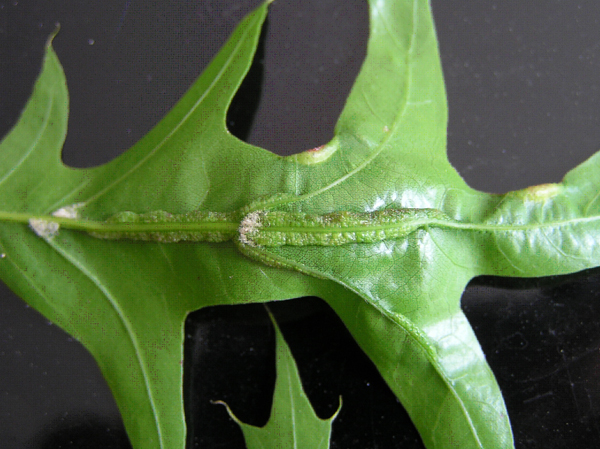Oak Leaf Itch Mites
 For many of us, fall is a favorite time of the year. The cooler weather with leaves rustling in the wind reminds us of harvest and the changing season. Unfortunately it can also mean the beginning of another season of oak leaf itch mites.
For many of us, fall is a favorite time of the year. The cooler weather with leaves rustling in the wind reminds us of harvest and the changing season. Unfortunately it can also mean the beginning of another season of oak leaf itch mites.
If that name doesn’t sound familiar to you, count yourself lucky. If it does, it means you’ve had an up close and personal encounter with one of the smallest pests around. And it’s not a pleasant experience.
I had my first exposure to itch mite years ago when late one summer, an epidemic emerged in the area. Phone call after phone call came in asking for help with identification of something that was causing bites and severe itching. Mysterious red bumps with raised white heads were appearing on arms, shoulders, legs and faces. Any exposed skin was vulnerable. The bites itched more severally than chiggers and reminded people of a rash because of the outbreak.
Another unique feature included the bites not showing up until hours after the person had been outside. And when questioned, oak trees almost always seemed to be in the area.
After searching for answers from our K-State entomologists, we suspected a small mite called a hay itch mite. Sometime later, the oak leaf itch mite, Pyemotes herfsi, was deemed to be responsible for the widespread outbreaks of itching bites in various Midwestern communities.
Pyemotes herfsi
Pyemotes herfsi is a European mite species that is a tiny, 0.2 mm (1/125 inch) long mite, barely visible to the naked eye. Typical bites on humans are raised and reddened with small blisters in the center. They are itchy and painful when scratched. Bites appear 10 to 16 hours after exposure when they start to itch. Intense scratching may lead to secondary bacterial infection.
Unlike chigger bites, which are commonly restricted to areas under tight clothing such as belts, underwear or socks, oak leaf itch mite bites appear where clothing is loose, usually at the neck, shoulder and chest. Bites are found on the upper body because itch mites drop from canopies of infested trees.
In the Midwest, oak leaf itch mites emerge in late July and continue through the summer. Bite problems intensify in the fall with increased gardening activities, mainly the handling of mite-infested leaves.
Protecting yourself from the itchy bites
Little is known about how to control these mites or how to protect humans from their bites. Typical spray applications are not effective because mites are protected within galls.
Oak leaf itch mite bites may be confused with bites from other insects and mites, such as scabies, chiggers and bird mites, but clinical signs are different and occur on different parts of the body. In addition, oak leaf itch mite bites occur in epidemic form, whereas bites from other agents generally are localized. Avoiding or reducing time spent under or near oak trees known to be infested with itch mites is one of the best ways to reduce bites. Bathing — and changing and washing clothes — after exposure to mite habitats is highly recommended.
DEET-based repellents have given mixed results. They may fail when relied on for complete bite protection. Repellants are more effective when used in combination with other protection practices.
Doctors recommend several remedies for relief from itching and other symptoms. Some of these medications require a physician’s prescription:
- Cortisone cream,
- Claritin 10 mg, daily, or other antihistamines, and
- Calamine lotion.
Click on the link for a copy of the K-State Research and Extension publication Oak Leaf Itch Mite.